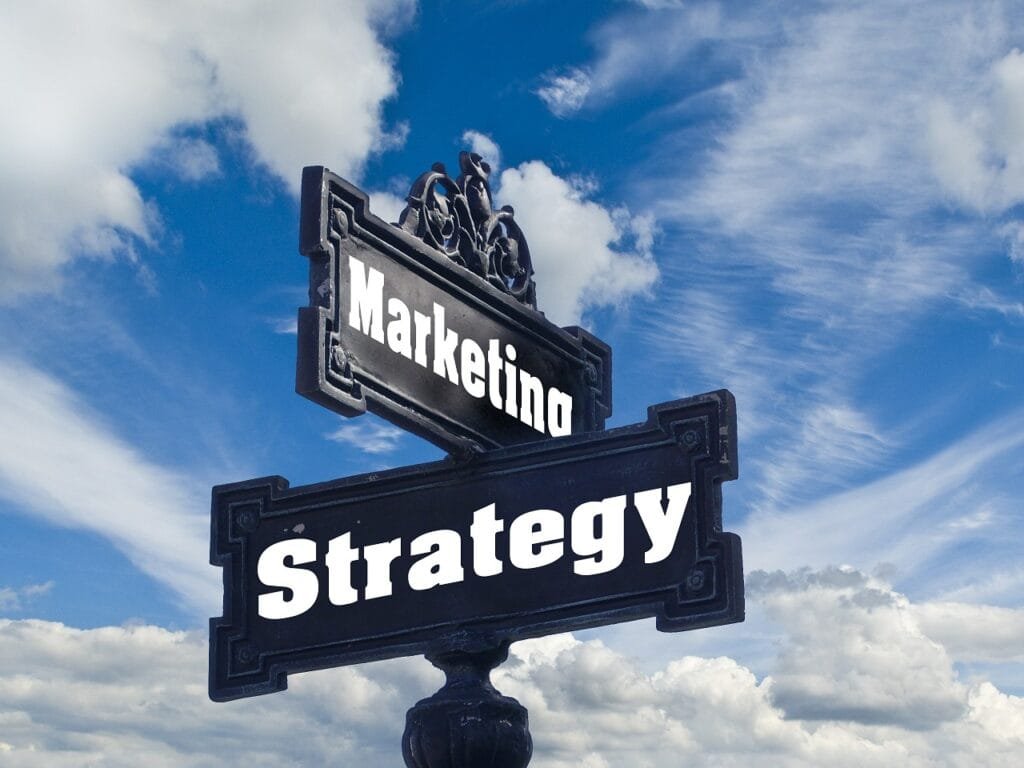This Article has been revised, edited and added to, by Poulomi Chakraborty.
- Branding Fundamentals in Health and Wellness
- Developing a Trusted Health and Wellness Brand
- Engaging Your Audience Effectively in Health and Wellness
- Leveraging Technology to Enhance Brand Visibility and Customer Engagement
- Maintaining a Strong Online Presence and Managing Your Brand’s Reputation
- Leveraging Partnerships and Collaborations to Enhance Market Position
- Conclusion
In the bustling realm of health and wellness, where new trends and innovations surface almost daily, standing out as a trustworthy brand is more crucial than ever. In this comprehensive guide, we’ll explore how effective branding can not only elevate your presence in this competitive industry but also forge a lasting connection with your audience, ensuring they feel confident in turning to you for their wellness needs.
Branding Fundamentals in Health and Wellness

What Sets Health and Wellness Apart?
Branding in any sector aims to connect a business with its target audience, but in health and wellness, the stakes are particularly high. This industry isn’t just about selling a product or service; it’s about promoting a lifestyle and, more importantly, influencing people’s well-being.
The core of successful branding here lies in trust and credibility. Unlike other industries, where customers may base their loyalty on price or convenience, health and wellness consumers are more discerning and deeply concerned with the authenticity and efficacy of the brands they support.
Comparison with the Tech Industry
To illustrate the unique challenges and opportunities in health and wellness branding, let’s compare it to the tech industry—a sector that also heavily relies on innovation but differs in how brand trust is built and maintained.
Innovation Speed and Consumer Trust
In the tech industry, innovation speed can be a primary driver of brand success. Companies strive to outpace each other with the latest gadgets and software, often making bold promises about revolutionary capabilities. Here, consumer excitement often hinges on novelty and technological advancement.
Contrast this with the health and wellness industry, where too rapid an introduction of new products or concepts can lead to skepticism among consumers. Wellness customers value thorough research and proven outcomes over mere novelty. They need to feel assured that the new health product they’re considering will benefit their well-being without adverse effects.
Marketing Messaging
When it comes to messaging, tech brands often leverage the power of future-forward and high-energy narratives. They paint a picture of a world transformed by technology, appealing to consumers’ desire for efficiency and connectivity.
Meanwhile, in health and wellness, the effective narrative is noticeably different. The focus shifts to calmness, assurance, and enduring value. Wellness brands succeed by communicating reliability, backed by scientific validation, and by creating a sense of community and support around their products.
Customer Engagement and Loyalty
In the tech world, customer loyalty can be as fleeting as the next product release. Consumers might switch brands for a better smartphone camera or a faster processor without a second thought. Health and wellness brands, however, have the potential to cultivate deeper loyalty.
Once trust is established, consumers are likely to stick with a wellness brand that consistently supports their health goals and aligns with their values, such as sustainability and ethical sourcing.
Regulatory Challenges
Tech companies often navigate a less stringent regulatory environment compared to the health and wellness sector. While tech innovations do face regulatory scrutiny, particularly in areas like data security and privacy, health and wellness companies must adhere to much stricter guidelines related to health claims and product safety.
This regulatory landscape deeply influences how brands in the wellness industry market themselves, often necessitating a more cautious and educated approach to how they communicate their benefits.
The Takeaway
Understanding these differences highlights why branding in the health and wellness industry must be handled with a unique sensitivity and sophistication. The approach must be more nuanced, prioritizing trust and long-term relationships over aggressive sales tactics or hyperbolic claims.
Developing a Trusted Health and Wellness Brand
Establishing Credibility Through Consistency
The foundation of a trusted brand in the health and wellness industry is consistency. This doesn’t just apply to your branding elements like logos or color schemes, but more critically, to your messaging and product quality. Consistency in these areas reassures consumers that they can depend on your brand to meet their expectations every time they interact with your products or services.
Clear, Consistent Messaging
Every piece of content you produce—be it on your website, social media, or packaging—should communicate your brand’s core values and benefits in a clear, concise manner. Avoid complex medical jargon and opt for language that is accessible and relatable.
This helps demystify health and wellness topics and makes your audience feel more connected to your brand. Additionally, maintaining a consistent tone and style across all platforms reinforces your brand’s personality, making it more recognizable and trustworthy to consumers.
Quality and Safety Assurance
Product quality cannot be overstated in the health and wellness industry. Ensuring that your products consistently meet high standards of safety and efficacy not only complies with regulatory requirements but also builds consumer trust.
Regular testing, transparent sourcing of ingredients, and clear labeling are all practices that contribute to a reliable brand image. By showing that you prioritize consumer safety and health, you solidify your reputation as a dependable provider in the wellness market.
Leveraging Testimonials and Endorsements
Word-of-mouth remains a powerful tool in the health and wellness industry. Positive reviews and testimonials from satisfied customers can significantly enhance your brand’s credibility.
Encourage your happy customers to share their experiences on social media or directly on your platform. Additionally, endorsements from credible figures in the wellness community, such as nutritionists, fitness experts, or even popular wellness influencers, can provide a substantial boost in trustworthiness.
Authentic Stories, Real Results
Showcasing real-life stories and case studies where your products have made a positive impact can resonate deeply with potential customers. These narratives should be authentic and relatable, highlighting achievable results rather than miraculous transformations, which can seem exaggerated and raise doubts about authenticity.
Educational Content as a Trust-Building Tool
Providing valuable, well-researched information not only helps in educating your audience but also positions your brand as an authority in the health and wellness field. This can be achieved through blogs, newsletters, webinars, and workshops that cover relevant topics within your niche.
By consistently offering useful and accurate information, you reinforce the perception that your brand is knowledgeable and trustworthy.
Engagement Through Education
Interactive content like quizzes, interactive infographics, and apps that track wellness progress can engage customers more deeply, making the educational process fun and personalized. These tools also provide value beyond just the products you sell, helping to integrate your brand into your customers’ daily lives.
Community Building
Creating a sense of community around your brand can lead to strong emotional connections, which are especially powerful in health and wellness. Platforms where users can share their journeys and support each other, such as forums or social media groups, enhance loyalty and trust. Community involvement shows that you care about your customers’ ongoing wellness journeys, not just about making sales.
The Takeaway
Building a trusted health and wellness brand requires more than just effective products. It necessitates a holistic approach that encompasses consistent quality, genuine testimonials, educational content, and a supportive community. Each of these elements plays a crucial role in fostering trust and credibility, essential for long-term success in this industry.
Engaging Your Audience Effectively in Health and Wellness

Personalization: The Key to Connection
In today’s market, personalization is not just a bonus; it’s expected. Health and wellness customers, in particular, appreciate when a brand acknowledges their unique health needs and preferences. Tailoring your products, services, and communications to individual customer profiles can dramatically enhance engagement and loyalty.
Utilizing Data for Customized Experiences
Leverage data from customer interactions, purchases, and preferences to create personalized marketing campaigns. Sending targeted emails that suggest products based on past purchases or browsing behavior can make customers feel understood and valued.
Moreover, personalized wellness plans or recommendations based on user-specific health data can significantly increase the relevance and impact of your offerings.
Segment Your Audience
Divide your audience into segments based on demographics, interests, and wellness goals. This segmentation allows you to design more effective marketing strategies and product offerings that cater to the specific needs of each group.
For example, fitness enthusiasts might receive content about high-intensity workouts and protein supplements, while those interested in mental health may be targeted with mindfulness exercises and stress-relief products.
Interactive and Engaging Content
To keep your audience engaged, your content needs to do more than just inform—it needs to captivate and interact. Incorporating interactive elements into your content strategy can increase user engagement and time spent on your platform.
Videos and Live Streams
Video content, particularly in the form of tutorials, product reviews, and live Q&A sessions, can be highly effective. These formats offer a dynamic way to showcase your products and share valuable information.
Live streams add an element of immediacy and interactivity, allowing for real-time engagement and building a more personal connection with your audience.
Gamification
Introducing gamification into your wellness programs or mobile apps can boost engagement by making the pursuit of health goals fun and competitive. Features like points, badges, and leaderboards can motivate users to stay consistent with their wellness routines.
Consistent and Valuable Interaction
Regular interaction with your audience is critical to keep them engaged and invested in your brand. Consistency in your communication helps establish a routine that customers can rely on and look forward to.
Regular Updates and Feedback
Keep your audience informed with regular updates about new products, services, or content. Also, actively seek feedback through surveys or comment sections to show that you value their opinions and are committed to improvement. This two-way communication not only enhances customer satisfaction but also provides you with valuable insights to better serve your audience.
Social Media Engagement
Utilize social media platforms to create a community around your brand. Regular posts, stories, and interactions through comments or direct messages make your brand more approachable and relatable. Hosting social media challenges or campaigns can also increase visibility and engagement.
Building Long-Term Relationships
Engagement should not be seen as a one-time effort but as part of a long-term relationship-building strategy.
Loyalty Programs
Implement loyalty programs that reward customers for repeat purchases or for taking part in community activities. These programs not only encourage repeat business but also make customers feel appreciated for their loyalty.
Continued Support and Education
Offer ongoing support and educational resources to help customers achieve their wellness goals. This could include follow-up consultations, additional informational content, or supportive online communities. Providing continued support helps maintain a lasting relationship, making customers more likely to turn to your brand time and again.
The Takeaway
Effective audience engagement in the health and wellness industry requires a blend of personalization, interactive content, consistent communication, and a focus on building long-term relationships.
By implementing these strategies, your brand can create meaningful connections with your audience, inspiring trust and loyalty in a competitive market.
Leveraging Technology to Enhance Brand Visibility and Customer Engagement

Embracing Digital Platforms
In the digital age, the right technology can propel your health and wellness brand to new heights. Harnessing the power of various digital platforms not only boosts your visibility but also enhances your engagement with customers.
Optimized Websites and Mobile Apps
A user-friendly, mobile-optimized website is essential for any health and wellness brand. It should provide easy navigation, fast load times, and secure checkout processes.
Additionally, a dedicated mobile app can significantly enhance user experience by providing convenient access to your products and services, personalized notifications, and unique features like health tracking or appointment scheduling.
SEO Strategies
Search engine optimization (SEO) is crucial for increasing the visibility of your brand online. Utilize SEO best practices to ensure your website and content are easily discoverable by potential customers searching for related health and wellness topics. This includes using relevant keywords, creating quality content, and optimizing your site’s structure and links.
Advanced Data Analytics
Using advanced data analytics tools can help you understand your customers better and tailor your offerings to meet their needs more precisely.
Customer Behavior Insights
Analytics tools can track customer behavior on your website and app, providing insights into which products or content they find most engaging. This data allows you to refine your marketing strategies and product offerings to better align with your audience’s preferences.
Personalization Engines
Implement personalization engines that use machine learning algorithms to recommend products, services, and content based on individual user behaviors and preferences. This not only improves the customer experience but also increases the likelihood of conversion by presenting the most relevant offerings.
Social Media and Influencer Collaborations
Social media platforms are invaluable for building brand awareness and engaging directly with customers. Utilizing these platforms effectively can help you reach a broader audience and create a more relatable brand image.
Influencer Partnerships
Partner with influencers in the health and wellness space who align with your brand values. Influencers can introduce your brand to their followers in a way that feels personal and trustworthy, driving both visibility and credibility.
Engaging Content Strategies
Develop engaging content strategies that resonate with your audience. This could include live video streams of workouts or cooking sessions, interactive stories with polls or quizzes, and regular posts featuring health tips, customer testimonials, or new product announcements.
Integrating Cutting-Edge Technologies
Stay ahead of the curve by integrating the latest technologies into your health and wellness offerings.
Virtual Reality (VR) and Augmented Reality (AR)
Use VR and AR to create immersive experiences that can enhance customer engagement. For example, VR can be used for virtual fitness classes, while AR can help customers visualize how supplements or health products might fit into their daily routines.
Chatbots for Customer Service
Deploy AI-driven chatbots on your website and social media channels to provide instant customer service. Chatbots can answer common queries, guide users through your product range, and provide personalized recommendations, improving the overall customer experience and freeing up human resources for more complex queries.
The Takeaway
Leveraging technology effectively is essential for any health and wellness brand aiming to enhance visibility and customer engagement. By embracing digital platforms, utilizing data analytics, engaging through social media, and incorporating cutting-edge technologies, you can ensure that your brand not only survives but thrives in the competitive health and wellness market.

Maintaining a Strong Online Presence and Managing Your Brand’s Reputation
Consistent Online Branding
A strong online presence starts with consistent branding across all digital platforms. This consistency helps to reinforce your brand identity and makes your business more recognizable and reliable to customers.
Unified Visual and Voice Consistency
Ensure that your website, social media profiles, and all online content reflect a unified visual style and tone of voice. Use consistent logos, color schemes, and fonts, and make sure that the messaging aligns with your brand values and appeals to your target audience.
Proactive Social Media Management
Social media is a dynamic tool for engaging with customers and building your brand online. Proactive management of your social media channels is crucial for nurturing relationships and maintaining a positive brand image.
Regular Engagement
Post regularly and engage genuinely with followers. Respond promptly to comments, messages, and reviews, both positive and negative. This shows that your brand values its customers and is attentive to their needs and feedback.
Monitoring and Analytics
Use social media monitoring tools to keep an eye on what’s being said about your brand online. Analytics can also tell you which types of content perform best, helping you to optimize your social media strategy and improve engagement.
Content Marketing

Content is king in the digital world, and a well-thought-out content marketing strategy can significantly enhance your brand’s online presence and authority.
Blogging and SEO
Maintain a blog with high-quality articles that address topics relevant to your audience’s interests and needs. Use SEO best practices to enhance visibility and drive traffic to your site. Provide value through your content to establish your brand as a thought leader in the health and wellness industry.
Video Content
Incorporate video content into your strategy. Videos are highly engaging and can convey complex information in an easy-to-digest format. Consider tutorials, behind-the-scenes looks, and customer testimonial videos to connect with your audience.
Online Reputation Management
Managing your brand’s reputation online is critical to maintaining trust and credibility with your audience.
Reviews and Testimonials
Encourage satisfied customers to leave positive reviews and testimonials. Display these prominently on your website and social media. Address negative reviews swiftly and thoughtfully, showing that your brand is committed to customer satisfaction and continual improvement.
Crisis Management Plan
Have a crisis management plan in place. If your brand faces a challenge or backlash online, respond quickly and professionally. Address the issue, communicate what steps are being taken to resolve it, and maintain transparency throughout the process.
Leveraging Technology for Enhanced Interaction
Utilize the latest technology to keep your online presence vibrant and engaging.
Automated Marketing Tools
Use automated marketing tools to streamline your social media posts, email marketing campaigns, and customer interactions. Automation can help maintain consistency and ensure timely communication.
Enhanced Customer Service
Offer multiple channels for customer service, including live chat, social media, and a dedicated phone line. Consider integrating AI chatbots to provide 24/7 assistance and quick responses to frequently asked questions.
The Takeaway
Maintaining a strong online presence and managing your brand’s reputation are continuous processes that require dedication and adaptability. By ensuring consistent branding, engaging proactively on social media, leveraging content marketing, managing your online reputation, and using technology effectively, your health and wellness brand can thrive in the digital age.
Leveraging Partnerships and Collaborations to Enhance Market Position

In the competitive health and wellness industry, partnerships and collaborations can be powerful strategies to expand your reach, enhance your brand’s credibility, and introduce your products to new audiences. Here’s how you can effectively leverage these relationships to strengthen your market position.
Identifying Strategic Partners
The first step in leveraging partnerships is identifying the right partners who share your brand values and have access to your target audience.
Complementary Businesses
Look for businesses that complement yours. For example, if your brand specializes in nutritional supplements, partnering with a fitness studio or a health food store could be beneficial. These partnerships can offer cross-promotional opportunities that are mutually advantageous.
Industry Experts and Influencers
Forming alliances with respected industry experts, such as dietitians, personal trainers, and wellness coaches, can enhance your brand’s credibility. Influencers with a strong following in the health and wellness space can also be valuable partners, as they can introduce your brand to a broader, engaged audience.
Structuring Mutually Beneficial Partnerships
Once potential partners are identified, the next step is to structure partnerships that provide value to both parties.
Co-Branding Opportunities
Co-branding projects, such as joint products or co-hosted events, can be very effective. These initiatives should highlight the strengths of both brands and offer something new and exciting to your combined audiences.
Affiliate Programs
Setting up affiliate programs with partners can drive sales and increase brand visibility. Affiliates promote your products in exchange for a commission on sales made through their referrals. This performance-based incentive ensures that both your brand and your partners benefit from the collaboration.
Leveraging Technology in Partnerships
Use technology to streamline and enhance partnership efforts.
Digital Tools for Collaboration
Utilize digital tools such as shared project management software to coordinate efforts and maintain clear communication between partners. Platforms like Slack, Trello, or Asana can help manage joint projects effectively, ensuring all parties stay on track.
Social Media Collaborations
Use social media platforms to maximize the reach of your partnership. Joint social media campaigns can engage both partners’ audiences and increase interaction through shared content, contests, and live events.
Crafting a Joint Marketing Strategy
Developing a joint marketing strategy with your partners can help ensure the success of your collaboration.
Unified Messaging
Create marketing materials with unified messaging that reflects the values and benefits of both partners. This cohesive approach helps present a united front to customers, enhancing the perception of both brands.
Cross-Promotion Tactics
Utilize each other’s marketing channels to cross-promote products or services. For instance, feature your partners’ offerings in your newsletters, and vice versa. This can greatly expand your reach and introduce your brand to a loyal audience that trusts your partner.
Measuring Success and Optimizing Collaborations
To ensure that your partnerships are fruitful, it’s crucial to measure success and make adjustments as needed.
Analytics and Feedback
Regularly review analytics to assess the effectiveness of partnership initiatives. Track metrics such as engagement, conversion rates, and ROI. Also, gather feedback from both partners and customers to identify areas for improvement.
Long-Term Relationship Building
Focus on building long-term relationships with your partners. Sustainable collaborations, as opposed to one-off projects, can yield ongoing benefits and help both brands grow over time.
The Takeaway
Strategic partnerships and collaborations offer a pathway to enhance your brand’s visibility, credibility, and reach in the health and wellness industry. By choosing the right partners, structuring mutually beneficial relationships, leveraging technology, crafting joint marketing strategies, and continuously optimizing efforts, your brand can achieve substantial growth and success.
Conclusion
In the dynamic landscape of the health and wellness industry, effective branding is essential for inspiring trust and ensuring long-term success. By understanding the unique aspects of this market, such as the importance of credibility and the intricacies of consumer expectations, brands can craft a powerful presence that resonates with their audience. From leveraging technology and social media to enhance visibility and engagement, to utilizing strategic partnerships for expanded reach and credibility, the potential strategies are extensive and varied.
Effective branding involves consistent messaging, a commitment to quality, and a genuine engagement with customers, fostering an environment of trust and loyalty. Meanwhile, navigating the digital domain with a proactive approach to online presence and reputation management is crucial. Ultimately, by adopting a holistic strategy that aligns with core values and consumer needs, health and wellness brands can not only survive but thrive, creating meaningful impacts on the well-being of their customers. This approach not only drives business success but also contributes positively to the overall health and wellness landscape.
Read Next
- How to use SEMrush: An Explainer
- How to use Zoho CRM: An Explainer
- How to use Tailwind for Social Media: An Explainer
- How to use SocialBee for Social Media: An Explainer
- How to use SproutSocial for Social Media: A Practical Guide






















Comments are closed.